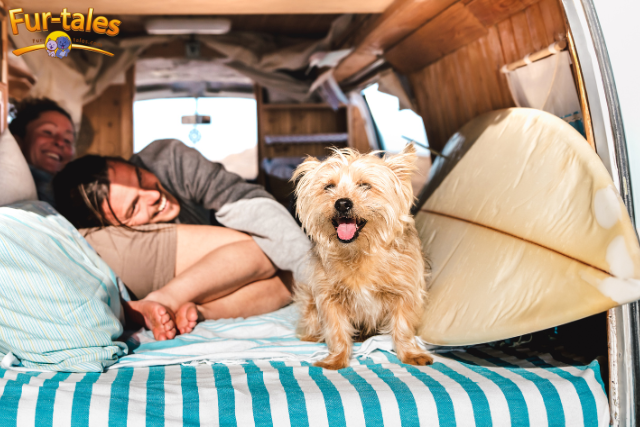
Traveling with a Reactive Dog: Tips for a Smoother Journey
Traveling with a reactive dog can be both rewarding and challenging. While the idea of exploring new places with your canine companion is exciting, managing their reactivity requires careful planning and understanding. This comprehensive guide offers practical tips and insights to help you and your reactive dog enjoy smoother journeys together.
Understanding Reactivity in Dogs
Reactivity in dogs refers to an overreaction to specific stimuli, such as other dogs, people, or unfamiliar environments. This behavior often stems from fear, anxiety, or lack of socialization. Recognizing and understanding your dog’s triggers is the first step toward managing their reactions effectively.
Pre-Travel Preparation
1. Consult with a Veterinarian
Before embarking on a trip, consult your veterinarian to ensure your dog is healthy and fit for travel. Discuss any concerns about anxiety or motion sickness, and inquire about possible medications or supplements that may help.
2. Desensitization and Training
Gradually expose your dog to travel-related stimuli to reduce anxiety. Start with short car rides or visits to new environments, rewarding calm behavior. Positive reinforcement can help your dog associate travel with positive experiences.
3. Crate Training
A crate can provide a safe and familiar space for your dog during travel. Ensure the crate is comfortable, well-ventilated, and appropriately sized. Introduce the crate at home before the trip, allowing your dog to acclimate to it gradually.
Choosing the Right Travel Method
1. Car Travel
- Secure Restraint: Use a crate or dog seatbelt to keep your dog safe and prevent distractions.
- Limit Visual Stimuli: Cover windows or use sunshades to minimize exposure to external triggers.
- Regular Breaks: Plan frequent stops for bathroom breaks and exercise.
- Comfort Items: Bring along your dog’s favorite toys or blankets to provide comfort.
2. Air Travel
- Research Airline Policies: Each airline has specific regulations regarding pet travel. Ensure you understand and comply with these policies.
- Crate Familiarity: Use the same crate your dog is accustomed to, reducing stress during the flight.
- Avoid Sedatives: Consult your vet before considering any medication, as sedatives can have adverse effects at high altitudes.
3. Train or Bus Travel
- Off-Peak Hours: Travel during less crowded times to minimize exposure to triggers.
- Quiet Areas: Choose seating away from high-traffic areas.Next Level Dog Training
- Inform Staff: Notify transportation staff about your reactive dog to ensure accommodations can be made if necessary.
Accommodation Considerations
1. Pet-Friendly Lodging
Choose accommodations that are pet-friendly and understand the needs of reactive dogs. Look for places with private entrances or secluded areas to minimize encounters with other guests or pets.
2. Private Rentals
Consider renting a private home or cabin, providing a controlled environment for your dog. This setup can reduce stress and allow for a more relaxed stay.
3. Camping
Camping can be an excellent option, offering open spaces and fewer interactions with others. Ensure the campsite allows dogs and has ample space to set up a comfortable area for your pet.
Managing Reactivity During the Trip
1. Maintain Routine
Stick to your dog’s regular feeding, walking, and sleeping schedule as closely as possible. Familiar routines can provide comfort in unfamiliar settings.
2. Exercise and Mental Stimulation
Provide regular physical activity and mental enrichment to help reduce anxiety. Interactive toys, puzzle feeders, and training sessions can keep your dog engaged and calm.
3. Avoid Triggers
Be vigilant in avoiding known triggers. Plan routes and activities that minimize exposure to stressful stimuli.
4. Use Calming Aids
Consider using calming products such as pheromone sprays, anxiety wraps, or natural supplements. Always consult your veterinarian before introducing new products.
Timing and Scheduling
Plan your activities during times when your dog is least likely to encounter triggers. Early morning walks or visits to less crowded areas can reduce stress for both you and your dog. Additionally, maintaining a consistent daily routine for feeding, exercise, and rest can provide stability and comfort.
Selecting Appropriate Destinations
Choose travel destinations that cater to your dog’s needs. Opt for locations with ample open spaces, pet-friendly accommodations, and fewer crowds. Researching and selecting suitable environments can significantly reduce your dog’s exposure to stressors.
Seeking Professional Guidance
If your dog’s reactivity poses significant challenges during travel, consult with a professional dog behaviorist or trainer. They can provide personalized strategies and training plans to address specific issues, ensuring a safer and more enjoyable experience for both you and your dog.
Post-Travel Care
After returning home, monitor your dog for signs of stress or illness. Provide a quiet and comfortable space for them to decompress. Reflect on what strategies worked well and what could be improved for future trips.
Frequently Asked Questions (FAQs)
Q: Can I train my reactive dog to become less reactive during travel?
A: Yes, with consistent desensitization and positive reinforcement training, many reactive dogs can learn to manage their responses better. However, progress may be gradual, and some level of reactivity may persist.
Q: Are there specific breeds more prone to reactivity?
A: Reactivity can occur in any breed. It’s often more about individual temperament, experiences, and socialization than breed-specific traits.
Q: Should I consider medication for my reactive dog during travel?
A: Consult your veterinarian to discuss the potential benefits and risks of medication. In some cases, short-term use of anti-anxiety medication may be appropriate.
Q: How do I handle situations where my dog becomes reactive in public?
A: Remove your dog from the triggering situation as calmly and quickly as possible. Use positive reinforcement to redirect their attention and provide comfort.
